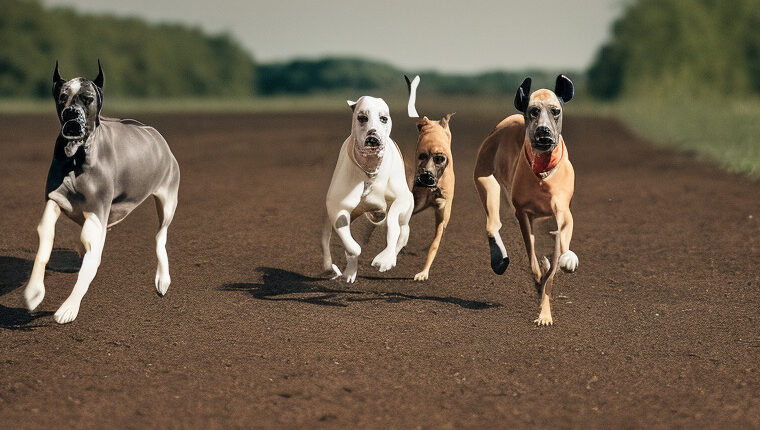Last Updated on November 4, 2023
The Importance of Exercise for Your Dog
 Exercise is not just a luxury for your dog; it’s an essential component of their overall well-being. Regular physical activity contributes to your dog’s physical health by helping to control their weight and reduce the risk of various health issues, such as obesity and joint problems. Moreover, exercise plays a pivotal role in their mental health, keeping them stimulated, preventing boredom, and reducing the likelihood of destructive behavior due to pent-up energy.
Exercise is not just a luxury for your dog; it’s an essential component of their overall well-being. Regular physical activity contributes to your dog’s physical health by helping to control their weight and reduce the risk of various health issues, such as obesity and joint problems. Moreover, exercise plays a pivotal role in their mental health, keeping them stimulated, preventing boredom, and reducing the likelihood of destructive behavior due to pent-up energy.
Setting Clear Exercise Goals
The first step in monitoring your dog’s exercise levels is setting clear goals. These goals should be tailored to your dog’s specific needs, taking into consideration their breed, age, and current health status. Different dog breeds have varying exercise requirements, so it’s important to customize your goals based on these factors. For example, a high-energy breed like a Border Collie will need more exercise compared to a low-energy breed like a Basset Hound.
Choosing the Right Activities
Selecting appropriate activities for your dog is key to achieving your exercise goals. A well-rounded exercise routine can include activities such as daily walks, runs, fetch, swimming, or interactive games like hide-and-seek. It’s important to choose activities that not only meet your dog’s energy level but also align with their preferences. Some dogs love a game of fetch, while others may prefer a leisurely walk or a swim.
Creating a Consistent Schedule
Consistency is the foundation of an effective exercise routine for your dog. By establishing a regular schedule for exercise sessions, you not only make it easier for yourself to track your dog’s activity but also help your dog adapt to the routine. Dogs thrive on routines and predictability, so a consistent schedule will make them happier and more cooperative.
Monitoring Your Dog’s Body Language
Dogs are excellent communicators, and they often use their body language to express their needs. While exercising, pay close attention to your dog’s cues. If your dog appears tired, starts panting excessively, or noticeably slows down, these are signs that your dog may need a break or a reduction in exercise intensity. It’s crucial to be responsive to your dog’s signals to ensure their safety and comfort.
Measuring Duration and Intensity
To effectively monitor your dog’s exercise levels, it’s essential to measure both the duration and intensity of the activities. Gradually increase the exercise duration and intensity over time, taking into account your dog’s age and fitness level. For example, if you’re training for longer runs with your dog, start with shorter distances and gradually build up. This gradual approach helps prevent overexertion and injuries.
Utilizing Technology
In today’s digital age, there are numerous tools and apps available to assist you in monitoring your dog’s exercise. Some of these apps or devices can track your dog’s daily steps, calculate the calories burned during exercise, and even set personalized exercise goals. These technological tools can be invaluable in keeping you informed and organized.
Making Adjustments
Your dog’s exercise needs may change over time. Aging dogs, for instance, may require less intense exercise due to potential joint issues or reduced stamina, while puppies may need more playtime to burn off their excess energy. Regularly assess and adapt your exercise routine to match your dog’s changing requirements. It’s a testament to your dedication to your pet’s well-being.
Conclusion
In conclusion, monitoring your dog’s exercise levels is a simple yet effective way to show your love and care for your four-legged companion. By setting specific goals, choosing the right activities, maintaining a consistent schedule, and paying attention to your dog’s cues, you can ensure your furry friend leads a healthy and active life. Embracing technology and adapting your routine to your dog’s changing needs are vital steps in this journey.
Remember that monitoring your dog’s exercise levels not only contributes to their physical and mental well-being but also deepens the bond you share with your beloved pet. So, start today, follow these guidelines, and watch your dog thrive with health and happiness!
 Dog N Treats All dogs deserve to be pampered
Dog N Treats All dogs deserve to be pampered



